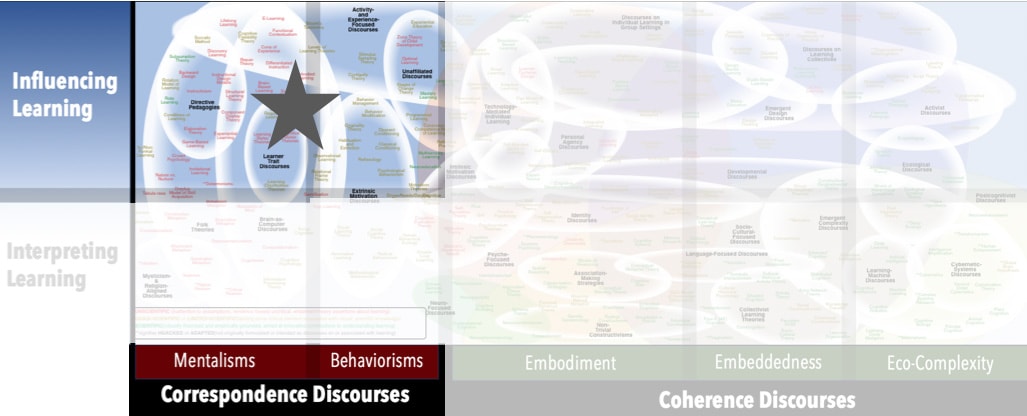Focus
Interpreting teaching in terms directing, directions, and other straight-line imagery.Principal Metaphors
- Knowledge is … the collection of explicit truths
- Knowing is … one’s subset of knowledge
- Learner is … a recipient; direction-taker
- Learning is … acquiring; attaining; attending
- Teaching is … directing
Originated
1600s (as an English word; the sensibility dates back much further)Synopsis
Directive Pedagogies, as the name suggests, refers to those attitudes and approaches to teaching that assume directional movement of information and authority from the teacher to the student. Images of straight lines figure prominently in discussions and enactments of Directive Pedagogies, including the teacher-to-student line of information flow, the first-to-twelfth-grade trajectory of learner progress, and so on. Associated discourses and constructs include:- Instruction – literally meaning “giving instructions,” the model of teaching most strongly associated with Mentalisms. Instruction has to do with providing direction and maintaining order (as is evident in its other major contemporary usage, to refer to the coded commands that direct a computer to perform specified functions – an extension of meaning that is perhaps useful for understanding the strong affiliation of Instruction-focused discourses on teaching and computer-based metaphors for learning).
Commentary
Two important meanings are at play in the word “directive” of Directive Pedagogies. The one mentioned above is the most obvious. The other, much more subtle “directive” has a knot of associations in English that goes well beyond assumptions and beliefs about learning and teaching, reaching into notions of valid truths, ethical behavior, the structure of the universe, and the nature of existence. There is no quick and simple way to explain this point, so we’ll do it this way: If we were pressed to choose an icon for modern, standardized education, it would be straight arrow that points rightward and upward. This image is implicit in most of standardized education’s core practices and defining principles, such as- a pervasive linear (cause–effect) logic – e.g., evident in the belief that teaching causes learning;
- a ubiquitous linearity in structures – e.g., evident in the assumptions that learners move incrementally along a numbered grade sequence;
- commonplace reliance on notions of order and hierarchy – e.g. evident in classroom dynamics, through regimes of assessment, and school administrative structures.
Subdiscourses:
- Instruction
Map Location

Please cite this article as:
Davis, B., & Francis, K. (2024). “Directive Pedagogies” in Discourses on Learning in Education. https://learningdiscourses.com.
⇦ Back to Map
⇦ Back to List
